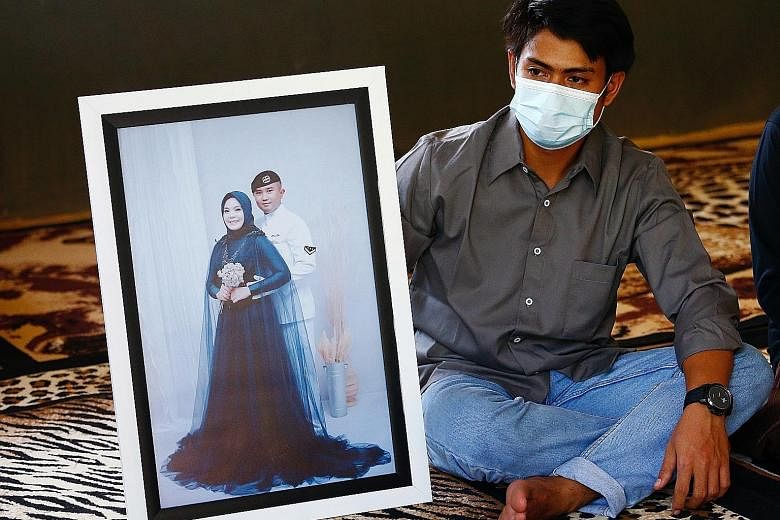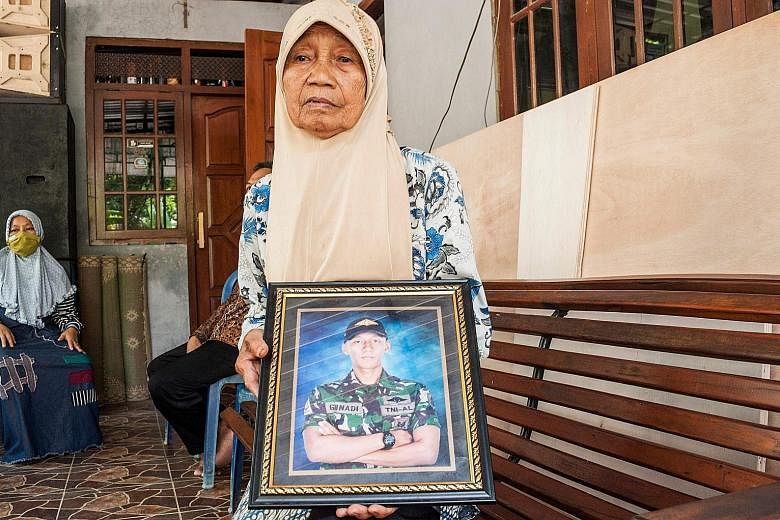A strong underwater wave might have been what caused an Indonesian submarine to descend quickly and sink to a depth of 850m north of Bali last week, killing all 53 crew members on board.
Two senior naval officers said the movement of a strong internal wave at the spot where the submarine was reported missing was on the satellite image report of Japanese weather satellite Himawari 8 as well as a European one.
Internal waves, or underwater waves, are hidden entirely within the ocean. The difference between an underwater wave and the water around it is its density, because of different temperatures or salinity.
"If we are hit by an internal wave (coming from above), that would be nature we are up against. We would be dragged by the waves, sending us to a quick descent. No one can fight nature," said Rear-Admiral Iwan Isnurwanto, a former submariner, during a media briefing in Jakarta yesterday.
The commander of the Navy Staff and Command School explained that there was a seawater density difference between the Lombok Strait and the much deeper waters north of Bali where the KRI Nanggala-402 submarine was.
Last Wednesday, the day of the accident, there was a massive movement due to density difference - from high to low - that spawned an enormous internal wave, coming from the Lombok Strait, between 200m and 400m deep, to waters in the north of Bali, where the depth is generally more than 1,000m.
Rear-Adm Iwan said, citing the satellite image report: "We are talking about two million to four million cubic metres of water hitting you. Could anyone overcome that? The Nanggala submarine descended 13m and could have been caught in the internal wave."
Rear-Admiral Muhammad Ali, planning and budget assistant to Indonesia's navy chief, said such weather phenomena will be taken into account for future operations and the navy will encourage further research into them.
"An investigation is still ongoing. It would take a while. We will invite submarine experts, not only from within, but perhaps also from overseas. We have international submariners' conferences. The Asia-Pacific Submarine Conference is held every two years and has been attended by... submariners worldwide," he said at the media briefing.
Indonesia's navy spokesman Julius Widjojono had earlier said that contact with the submarine had most likely been lost at 600m to 700m underwater, while the vessel was designed to withstand depths of up to 500m.
The 44-year-old submarine was due to carry out a torpedo drill after it asked for permission to dive early last Wednesday, but contact was then lost.
The navy also said earlier that a possible power blackout during the static dive may have caused the submarine to lose control and made it unable to perform emergency procedures. The navy has not ruled out this possibility.
Singapore's submarine rescue vessel, MV Swift Rescue, yesterday helped in salvage efforts, Rear-Adm Ali said. Torpedo missiles the submarine was carrying, each weighing about two tonnes, were also located.
"Efforts now are focused on retrieving smaller items, as the remotely operated underwater vehicle deployed is capable of lifting materials up to 150kg. Arrangements to lift heavier items are being made," he said.
Meanwhile, the families of those who died in the incident have called for the authorities to retrieve their bodies from the sea.
"We understand it may take time," Mr Wahyudi, 52, the father of 22-year-old torpedo shooter Pandu Yudha Kusuma, told The Straits Times in Banyuwangi. "Families - wives, children and parents - want to be given a chance to take care of them for the last time."
Mr Wahyudi, an army officer, said that amid the grief, he was also proud of his son, a Banyuwangi native.
"This is the last pride he showed to his parents - passing away while performing a state duty and becoming a hero," he said, adding that Mr Pandu had understood well the risks of being a submariner.
President Joko Widodo is set to hand over compensation to the families of the submarine crewmen at Juanda naval airbase in Surabaya tomorrow.


